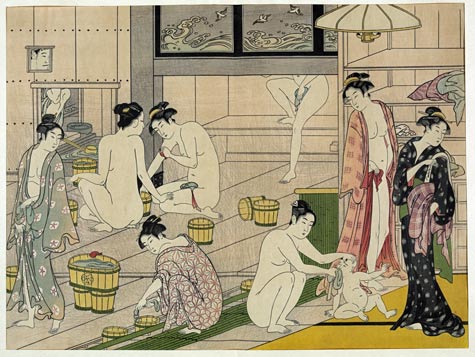
I wonder what other kinds of traits are coded in our genes. Personality characteristics such as kindness, artistic talent, and optimism? How about behaviors? I’ve heard that certain genes are associated with violence. Maybe flirting, overeating, and nitpicking are part of our genetic makeup, too. I don’t think that’s so far-fetched an idea. Many quirks, including our not-so-admirable ones, cut across racial, ethnic, cultural, geographical, and temporal lines. Maybe that’s evidence that they’re hard-wired into us.
Consider voyeurism.
It’s such a well-known phenomenon that we have a nickname for people who engage in it—“Peeping Tom.” That’s an English term that dates back to the eleventh century, supposedly when a fellow named Tom sneaked a peek at Lady Godiva. But voyeurism respects no geographical boundaries. And I don’t think it happens everywhere in the world just because the word went viral through the ancient grapevine: “Hey, spying on naked people is fun, you ought to try it.” I suspect it’s an impulse that originates from within a person, for reasons more biological than social. And it’s certainly well-known elsewhere besides the West.
The Japanese term for a Peeping Tom is debakame— “Buck-toothed Turtle.” It derives from a man whose troubles began with voyeurism.
 In 1908, a series of crimes against women took place in and around Okubo, then a mainly rural district of Tokyo. The wife of a physician fought off a male attacker. Another woman was assaulted. A pregnant woman named O-En Koda, the wife of a telephone company employee, went missing after a trip to the public bath. She turned up dead in a vacant lot, her towel stuffed down her throat. A tip led police to arrest Kametaro Ikeda, a thirty-five-year-old gardener.
In 1908, a series of crimes against women took place in and around Okubo, then a mainly rural district of Tokyo. The wife of a physician fought off a male attacker. Another woman was assaulted. A pregnant woman named O-En Koda, the wife of a telephone company employee, went missing after a trip to the public bath. She turned up dead in a vacant lot, her towel stuffed down her throat. A tip led police to arrest Kametaro Ikeda, a thirty-five-year-old gardener.
Ikeda had a habit of peering through knotholes at the public bath and spying on the women. He’d been seen following some of them home, and he had no alibi for the night of O-En’s murder. While under interrogation, Ikeda confessed to killing O-En. He said he’d seen her naked in the bath and felt such a desire for her that he accosted her on the street. When she screamed, he shoved her towel into her mouth, and she suffocated.
 Kametaro Ikeda was charged with murder. The media dubbed the case “The Buck-toothed Turtle Incident,” referring to his prominent overbite and his name (kame means turtle). During his trial, Ikeda recanted his confession. The defense claimed that the police had used physical coercion on him and produced witnesses to give him an alibi. It didn’t work. On August 10, 1908, Ikeda was convicted. He served thirteen years in prison. After his release, he resumed working as a gardener.
Kametaro Ikeda was charged with murder. The media dubbed the case “The Buck-toothed Turtle Incident,” referring to his prominent overbite and his name (kame means turtle). During his trial, Ikeda recanted his confession. The defense claimed that the police had used physical coercion on him and produced witnesses to give him an alibi. It didn’t work. On August 10, 1908, Ikeda was convicted. He served thirteen years in prison. After his release, he resumed working as a gardener.
That’s not all he resumed. In 1933, Ikeda was arrested for peeping into a women’s bathhouse. No charges were filed, and he was sent home.
Recidivism is another behavior that crosses racial, ethnic, cultural, and geographical lines. According to a 2002 study conducted by the United States Department of Justice, one in nineteen sex offenders released from prison were later arrested for another sex crime. Maybe sexual obsession, poor impulse control, and the inability to learn from one’s mistakes are coded in the human genes, too. I wouldn’t be surprised. Maybe someday, voyeurism will be pinned to a specific location on the human genome map.
But one thing seems certain: The panoply of traits that we humans share makes us all brothers and sisters under the skin. Or, in some cases, fellow buck-toothed turtles under the shell.
Source of information about Kametaro Ikeda: The Dark Side, Infamous Japanese Crimes and Criminals by Mark Schreiber, 2001.
Laura Joh Rowland is the best-selling author of a mystery series set in 17th-century Japan that features samurai detective Sano Ichiro. Her seventeenth and latest book in the series is The Shogun's Daughter (September, 2013).

fascinating.